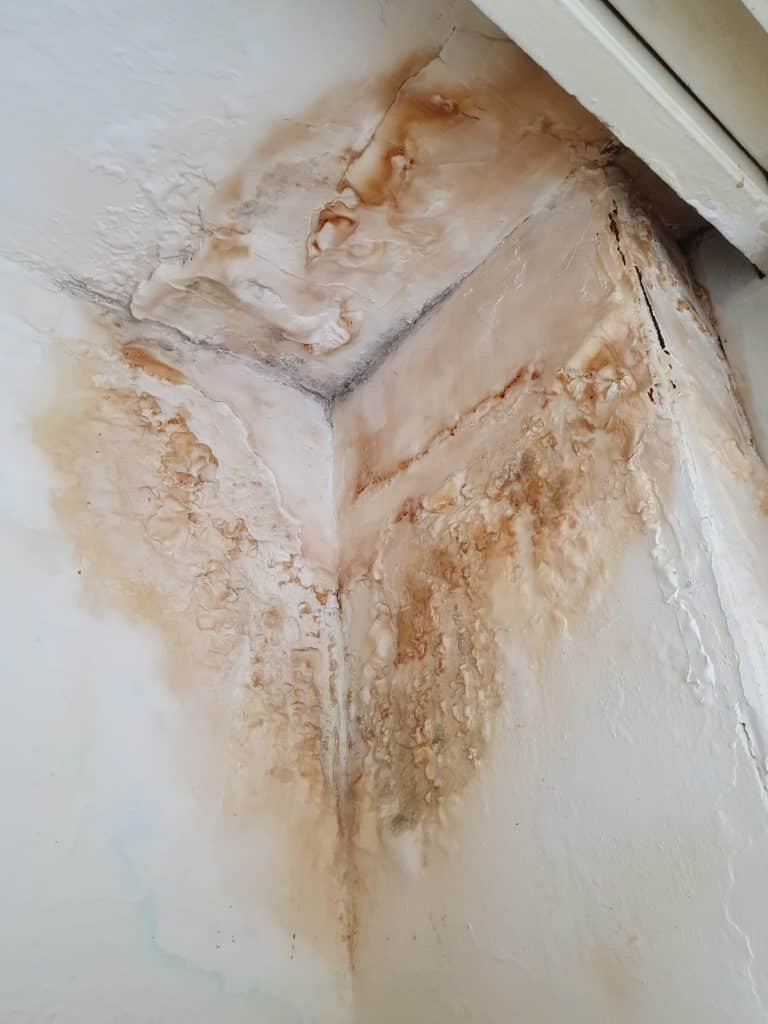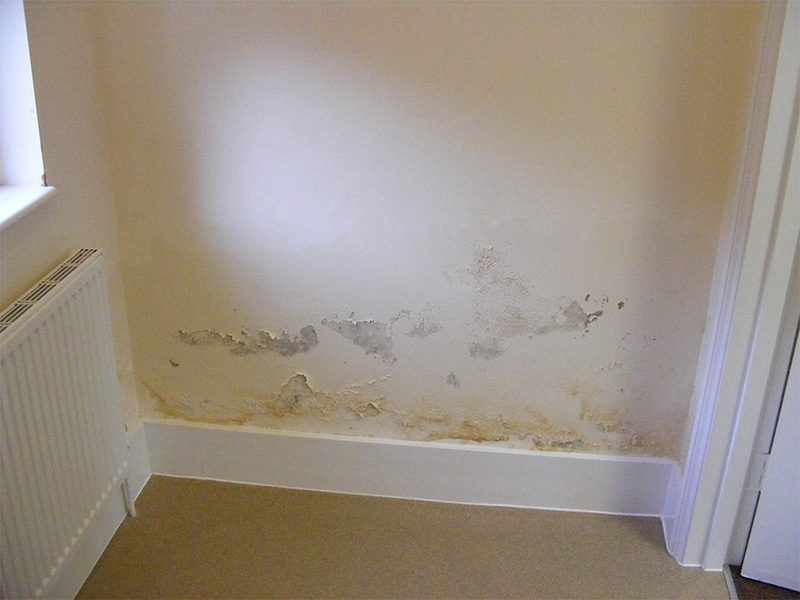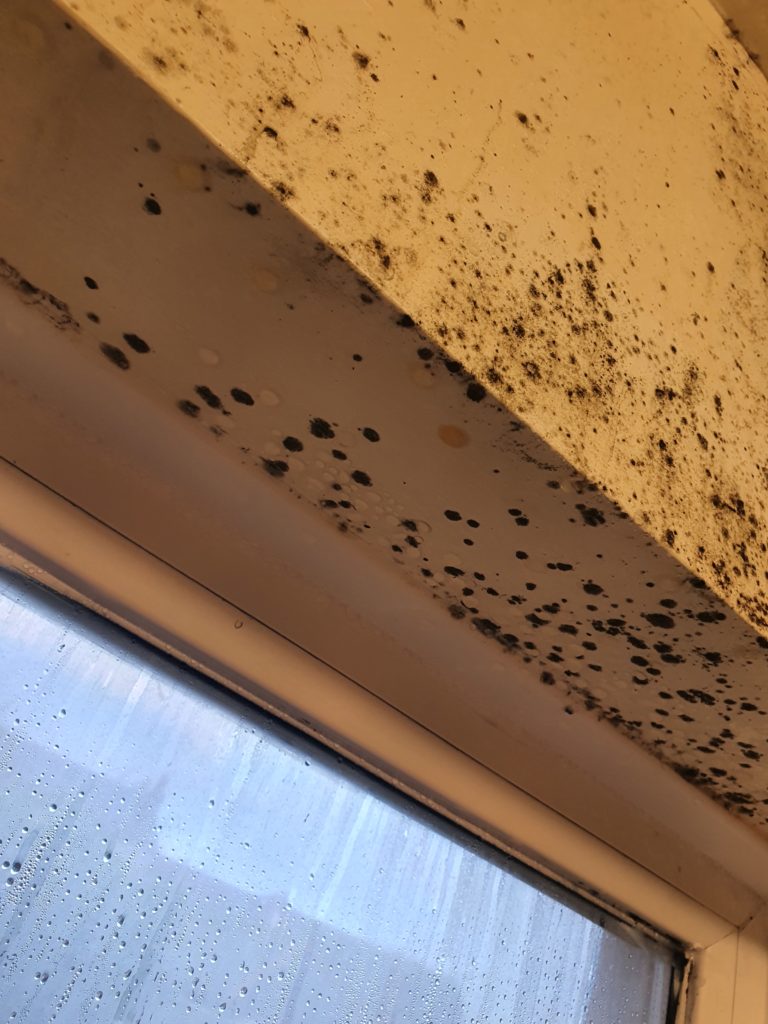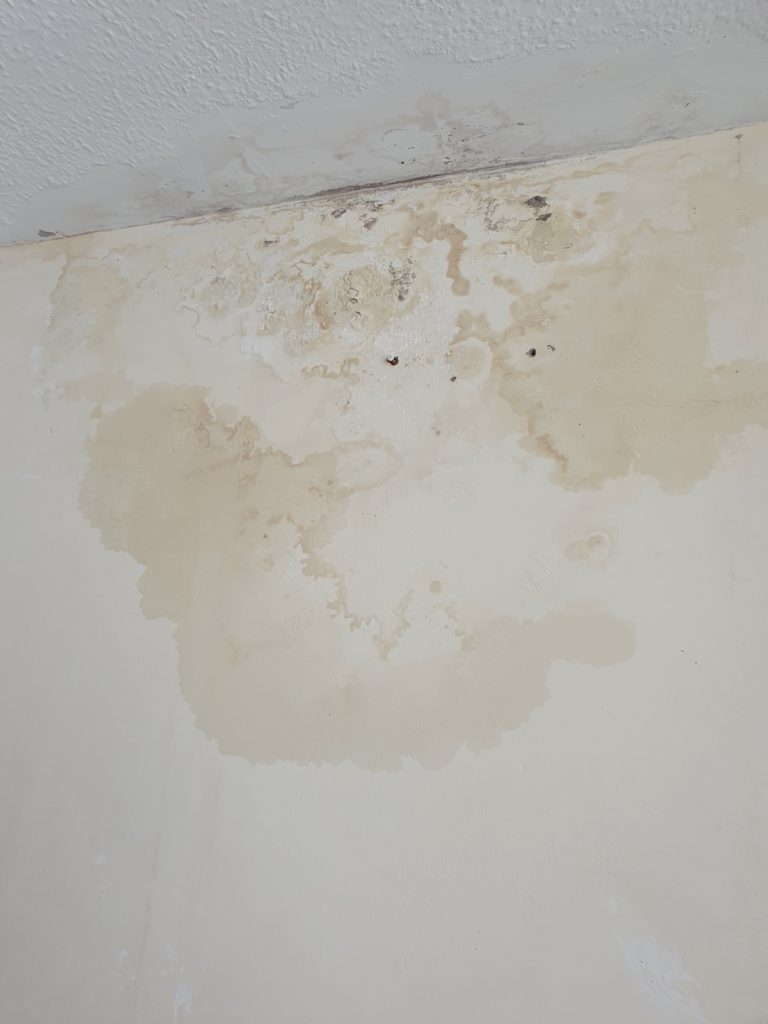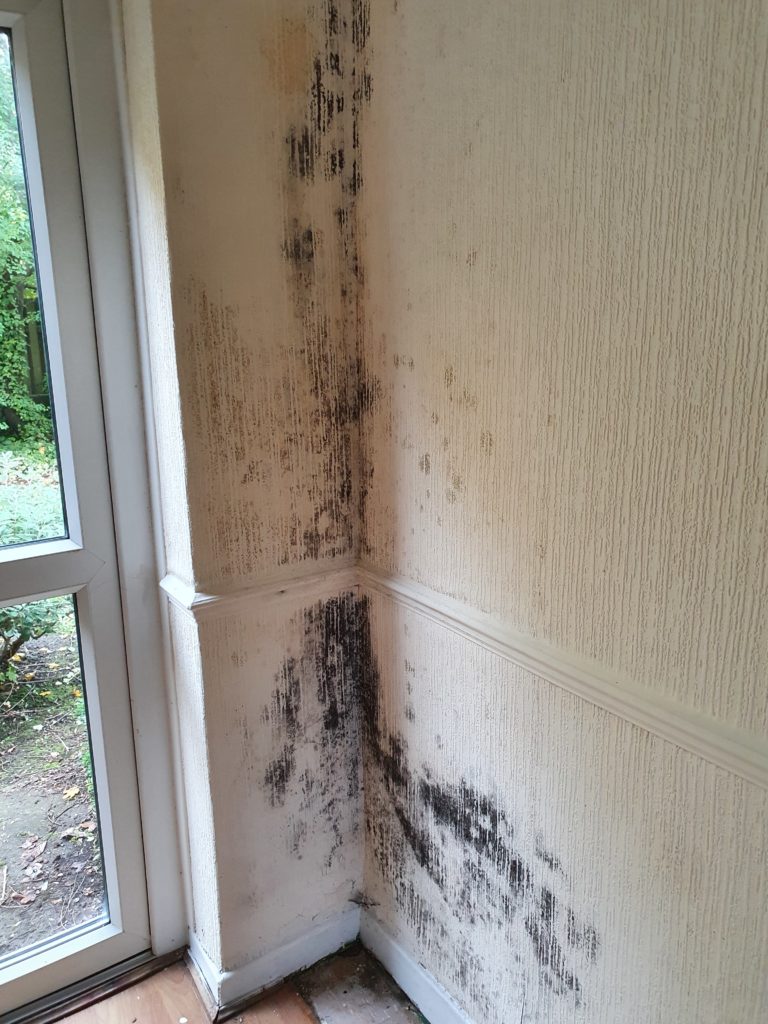What is damp?
Damp refers to the presence of moisture, water and condensation being present within a property.
Problems with damp in your property can easily occur without any warning signs and can cause serious damage to your building’s infrastructure if left. When looking for damp in your property, there are a number of signs that you can spot, such as a damp musty smell, black spot mould, or in extreme cases, dry rot and wet rot growth.
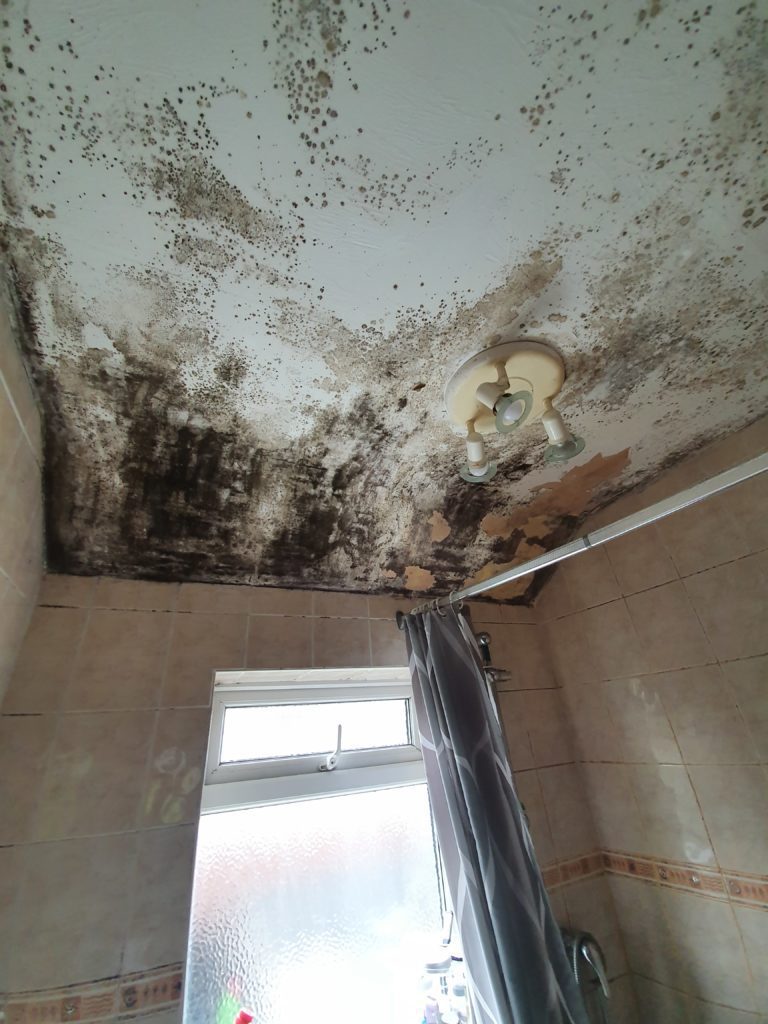
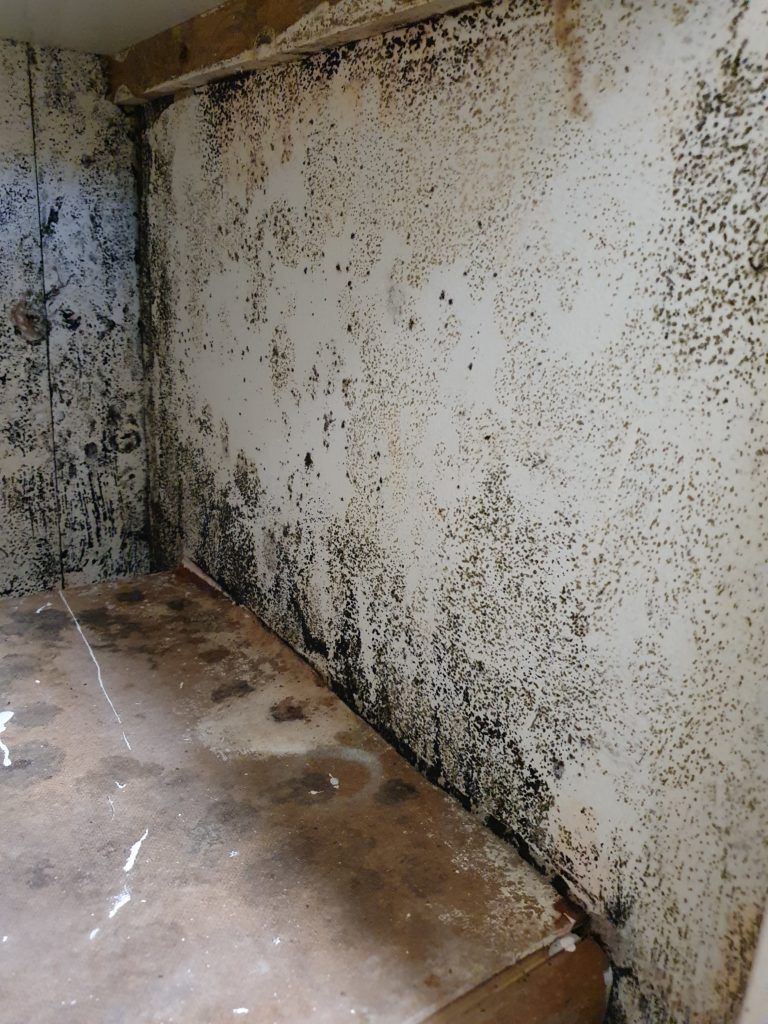
How to stop damp problems occurring in your house
For less severe or easily identifiable damp issues, there are many DIY solutions that can help you get rid of damp stains and patches in your house.
Unfortunately, rising damp or more severe cases of damp are not so easily resolved and you will likely require the expertise of a qualified surveyor to accurately identify and diagnose the problem. If required, they will also be able to install a remedial damp proof course or other professional damp proofing treatment to resolve your damp problems.
Sorting out the damp problem as early as possible is essential to stopping it from getting a whole lot worse. If you leave damp untreated, the problem will not go away by itself. It is important to understand that before any cosmetic damage can be fixed, the source of damp must be corrected first.
Diagnosing damp problems
There are tell tale signs to look out for when spotting signs of damp:
Windows – If there are high moisture levels within the house, condensation will appear on the windows with small puddles appearing on the windowsills
Black mould can also occur on the windows around the frames. This is another sign that you have a condensation problem.
Walls – If the windows feel cold and damp to touch, then this is a clear symptom of dampness in your home. If the damp problem is left for a prolonged period of time, the walls might start to develop fungal growth.
If the wallpaper starts to peel or there is flaking paint, then this is another visual sign that your house is affected by damp.
Kitchens and bathrooms – Checks should be made for signs of mould growth on the sealant. The windows and ceiling also should be checked for mould growth. Bathrooms and kitchens are areas in the house where there tends to be high amounts of moisture.
Basements – The first thing you will probably notice, if you have a damp basement, is there will be a damp, musty smell. You should also check for visual signs such as stains, mould and damp on walls.
Health implications from damp and mould
Moulds are caused by too much moisture in a building and they emit spores which can cause a variety of health effects. Some people are particularly sensitive to them, such as babies and young children, the elderly and those with allergies or asthma.
For those with allergies, breathing in or touching mould spores can cause severe reactions, including asthma attacks, fever and shortness of breath, while for others, mould can bring on a runny nose, red or itchy eyes and irritated skin.
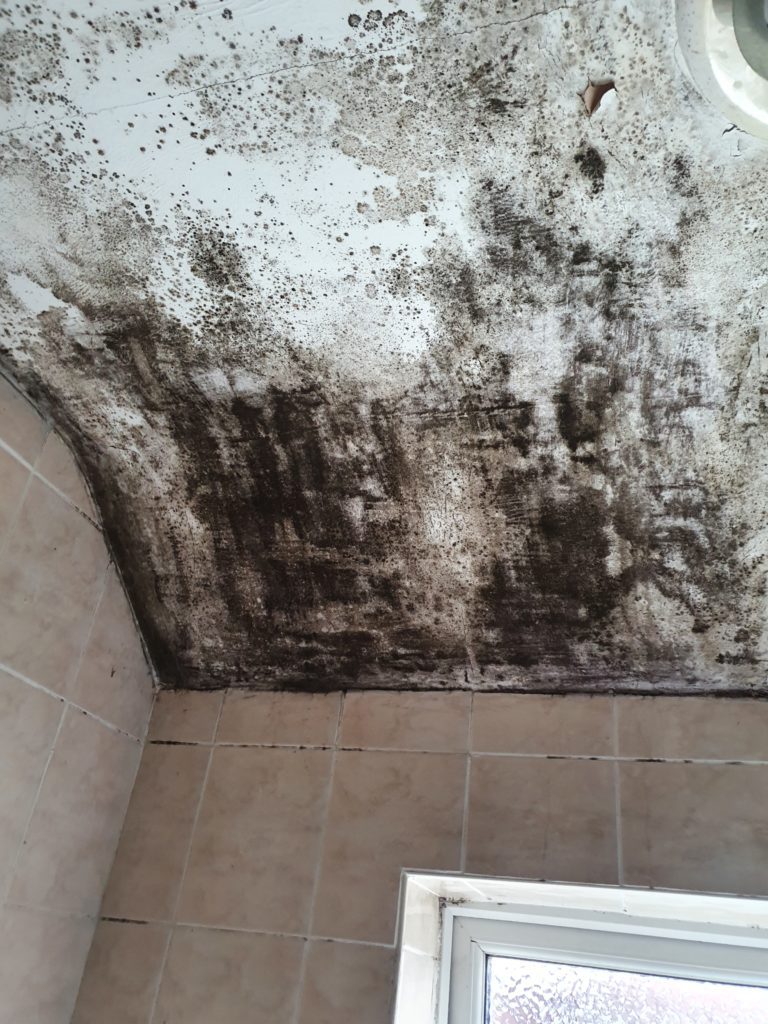
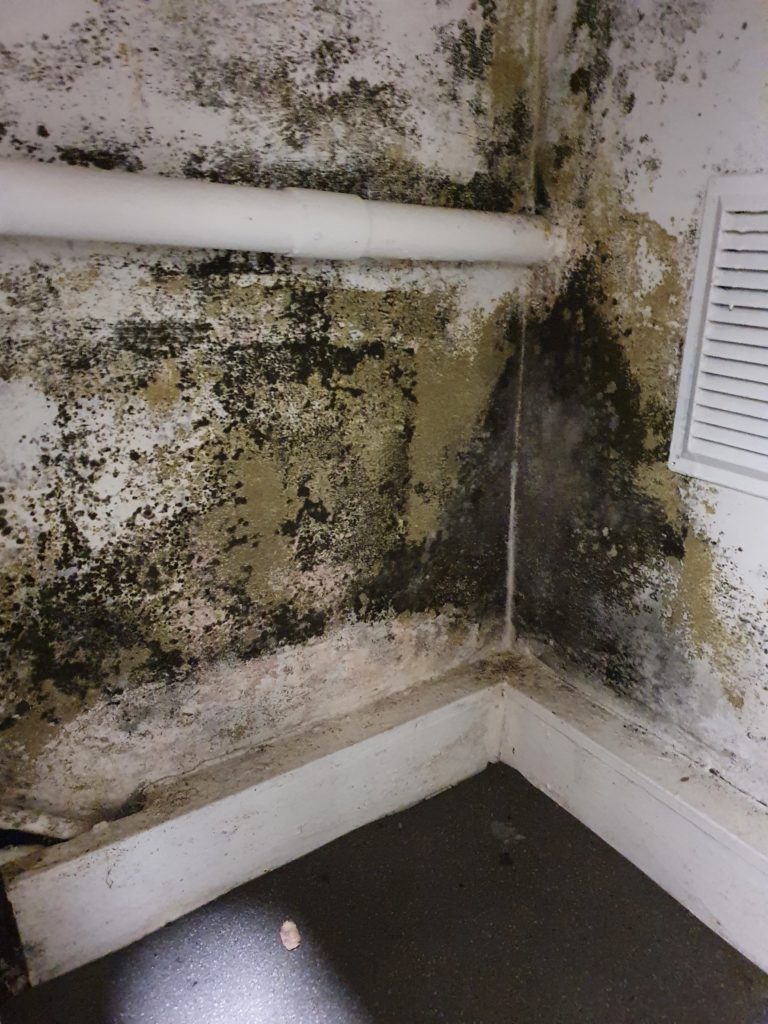
Signs of condensation in houses
Beads of moisture on cold surfaces like windows, tiles and cold walls
- Increased humidity levels
- The appearance of mould
- Damp smells
- Condensation that is left untreated can result in peeling plaster
Read more about the signs of condensation.
How do I stop condensation?
The most effective way to stop condensation in your home is to ensure the property is sufficiently ventilated along with regulated heating. Failure to tackle excess ventilation will likely lead to the presence of mould in you home. Simply wiping away mould is not an effective measure. This is because the mould will simply grow back if the root of the cause is not addressed.
Take the following steps in order to reduce the effects of condensation and mould.
- Sufficient ventilation – Keeping doors closed and windows open will help excess moisture escape the property before it can settle on walls and windows. Extractor fans should also be used when cooking and showering. Extractor fans in kitchens and bathrooms will stop moisture spreading around your home.
- Reduce moisture levels – Everyday changes can reduce the amount of excess moisture in your home. Keep lids on pots and pans when cooking. Where possible, dry clothes outside, or alternatively, use a tumble dryer.
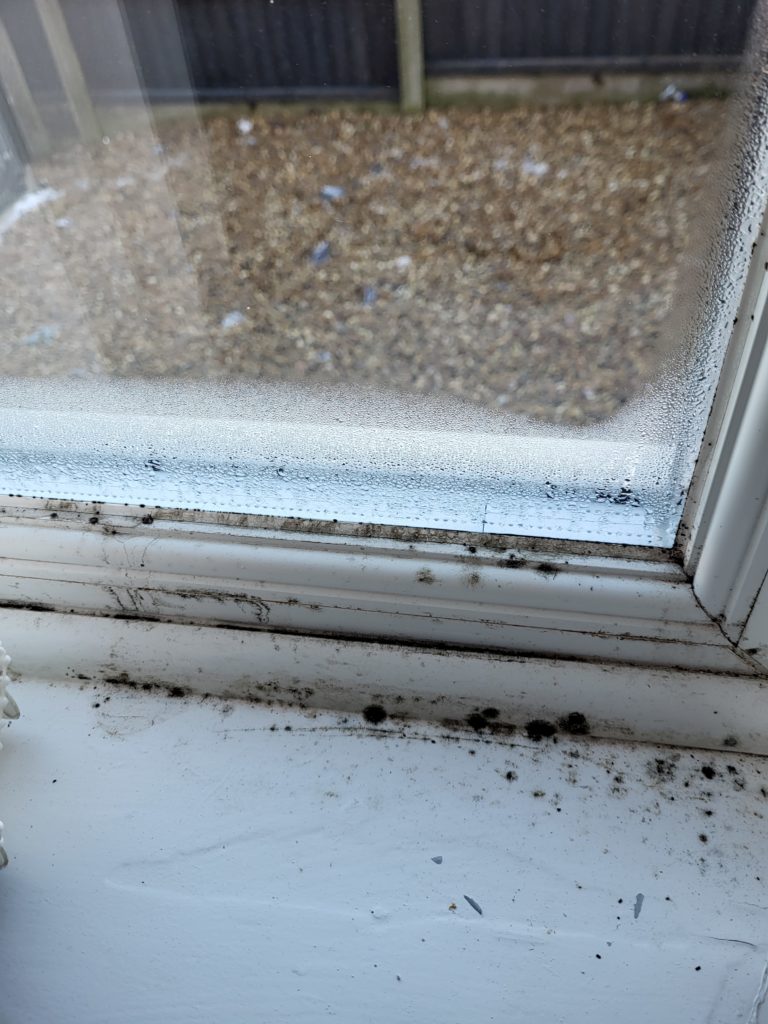
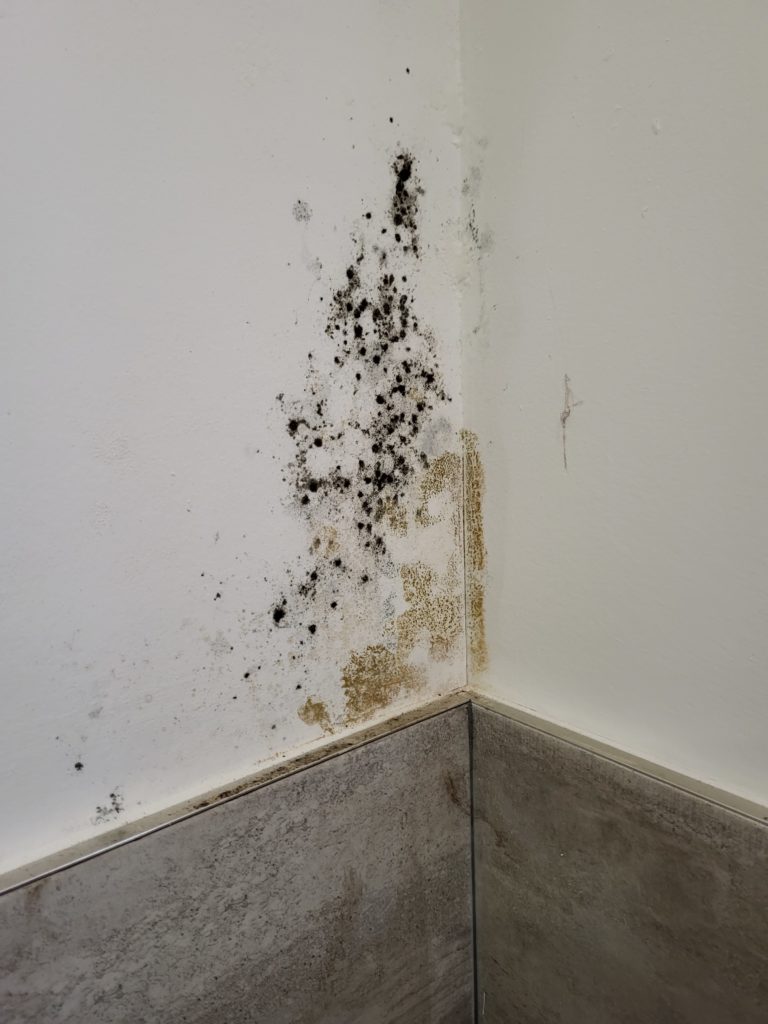
Signs of penetrating damp in houses
- Damp staining on external walls
- Damp patches on internal walls or ceilings
- Wet and crumbly plaster
Read more about penetrating damp.
How do I stop penetrating damp?
In order to stop penetrating damp, you must find the source of water ingress and eliminate the source. Signs of damp symptoms will simply keep recurring if the cause of the dampness is not treated.
Some of the most common sources of entry are:
- Check for gaps or cracks in gutters and downpipes
- Check for signs of water ingress on your roof space such as wet timber
- Check for gaps or cracks in doors and window frames
- Check for ageing porous brickwork
Signs of rising damp in houses
Damp tide mark rising up to 1m from the skirting board
- White salt deposits left behind on the plaster
- Damp and stripping wallpaper
- Decaying skirting boards
Read more about rising damp.
How do I stop rising damp?
Rising damp is prevented by the installation of an effective damp proofing course that moisture from below the ground is blocked. If you have noticed signs of rising damp, this means there is either no damp proof course in place at the property or it is ineffective.
The most cost effective solution to stop rising damp is the installation of a chemical damp proofing course. This involves an injection into the brickwork, creating a water repellent barrier which will prevent moisture rising up through the bricks.
We would recommend contacting a damp specialist to ensure that any damp proofing course is installed correctly.
Damp on walls
Given the amount of rain we are subjected to in the UK, it is no surprise that many of us have experienced damp problems with damp on walls. Whether it’s moisture entering the building via rising damp, damp patches causes by water ingress, or simple condensation, there are a variety of problems that can cause wet stains on our walls.
Our guide will discuss the causes of damp walls, how to identify them, and the best methods of treatment. For specialist advice, get in touch using our ‘get in touch’ button at the bottom of this page.
What causes damp problems on walls?
Understanding the cause of having damp problems on walls, mould growth, or excess moisture in your home is key to identifying the correct form of treatment you require to resolve the problem. The most common causes are:
Damp walls caused by rising damp
Rising damp is caused by a capillary action and only affects ground floor walls. The biggest sign is a ‘tide mark’ of moisture above the skirting. Another common symptom is white marks left by hygroscopic salts drawn out of the brickwork. The salts and moisture often cause damage to plaster, affect wallpaper and create a damp, must odour.
Damp walls caused by penetrating damp
Penetrating damp refers to moisture ingress through a lateral wall. It can affect walls at any level of a property. If water management systems like guttering or downpipes on the outside of your property look damaged or blocked, they are likely the source of the problem. Defective pointing on the external wall pebbledash or render and leaks in plumbing can also cause penetrating damp.
On internal walls, penetrating damp can create moisture patches. These can damage plaster, leave water marks and cause a damp musty smell.
Condensation symptoms on damp walls
Dampness caused by condensation will typically manifest as mould spots on paintwork, wallpaper and around window frames. Condensation problems are more likely to occur on outside facing walls, but can affect any cold surface in the property. Condensation and mould problems are more common in the autumn and winter months, when people close their windows and increase the humidity; particularly prevalent in bathroom and kitchen walls.
Damp on internal walls
All of the three main types of dampness can result in some similar symptoms. This could include paint cracking or deteriorating, damp patches and stains appearing on the wall. Thankfully, however, there are some specific traits to look our for to help you identify the type of damp in your property.
The appearance of mould is usually the giveaway that condensation is the problem. While rising damp is commonly accompanied by a ride-mark that can reach anywhere from just above the skirting board to up to 1 metre in height across the affected area of the ground level wall.
Meanwhile, water ingress can appear at any level of the property, accompanied by a corresponding defect on the external side, allowing the water to penetrate through to the inside wall.
How to treat damp on internal walls
Damp is one of the most unpleasant problems a property owner can encounter. Damp problems can make a property feel miserable and ugly. If they are left to fester, they can lead to structural problems and potentially costly repairs.
Whether in old properties or new properties, to fix the problem and repair your walls, it is essential that you apply the right form of treatment. If you can identify the type of damp you have, then you can see the most popular form of treatment for each below:
- Rising damp – The most popular solution is to install a water repellent remedial damp proof course (DPC). This involves injecting a damp proofing cream into the mortar bed of the ground wall. After re-plastering, the DPC is invisible
- Penetrating damp – The first step is to repair the fault in the building that is allowing the water ingress and then you can deal with any damp issue or related problems, such as wet rot or dry rot on the internal side of the property. Occasionally, this involves installing damp proof membrane to affected areas
- Condensation patched and mould on walls – Condensation problems are caused by lack of ventilation
Damp on external walls
Damp stains will often display on external walls as well. In the same way that tidemarks display on the inside of the property, they will often be present on the external side of the property, too.
Penetrating damp will frequently result in moss or vegetation growth on or around the source of water ingress on the exterior of the property.
You may also be able to see salts that have been present either in groundwater or the building materials become visible on exterior walls.
Does cavity wall insulation cause damp?
Many properties in the UK have cavity wall insulation, and while it is perfectly functional most of the time, certain circumstances can lead to a link between cavity wall insulation and penetrating damp.
Cleaning the house after repairing damp walls
Fixing damp problems caused by rising damp, penetrating damp or even condensation, will often necessitate that our specialist team have to drill through brick and mortar walls or hack off sections of plaster.
To ensure that we leave your home in walk-in condition after any treatment, our teams are equipped with top of the range Hilti dust extraction units to minimise the amount of dust created during these installations.

